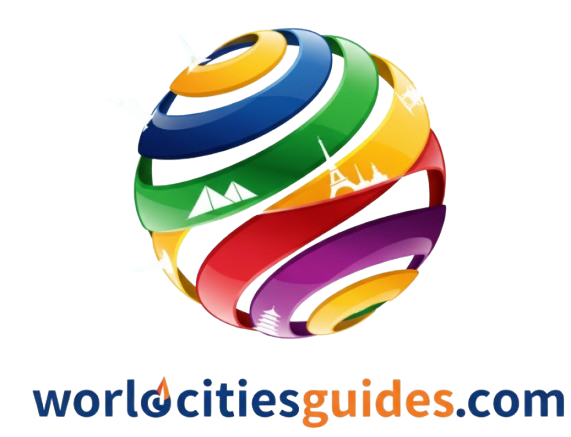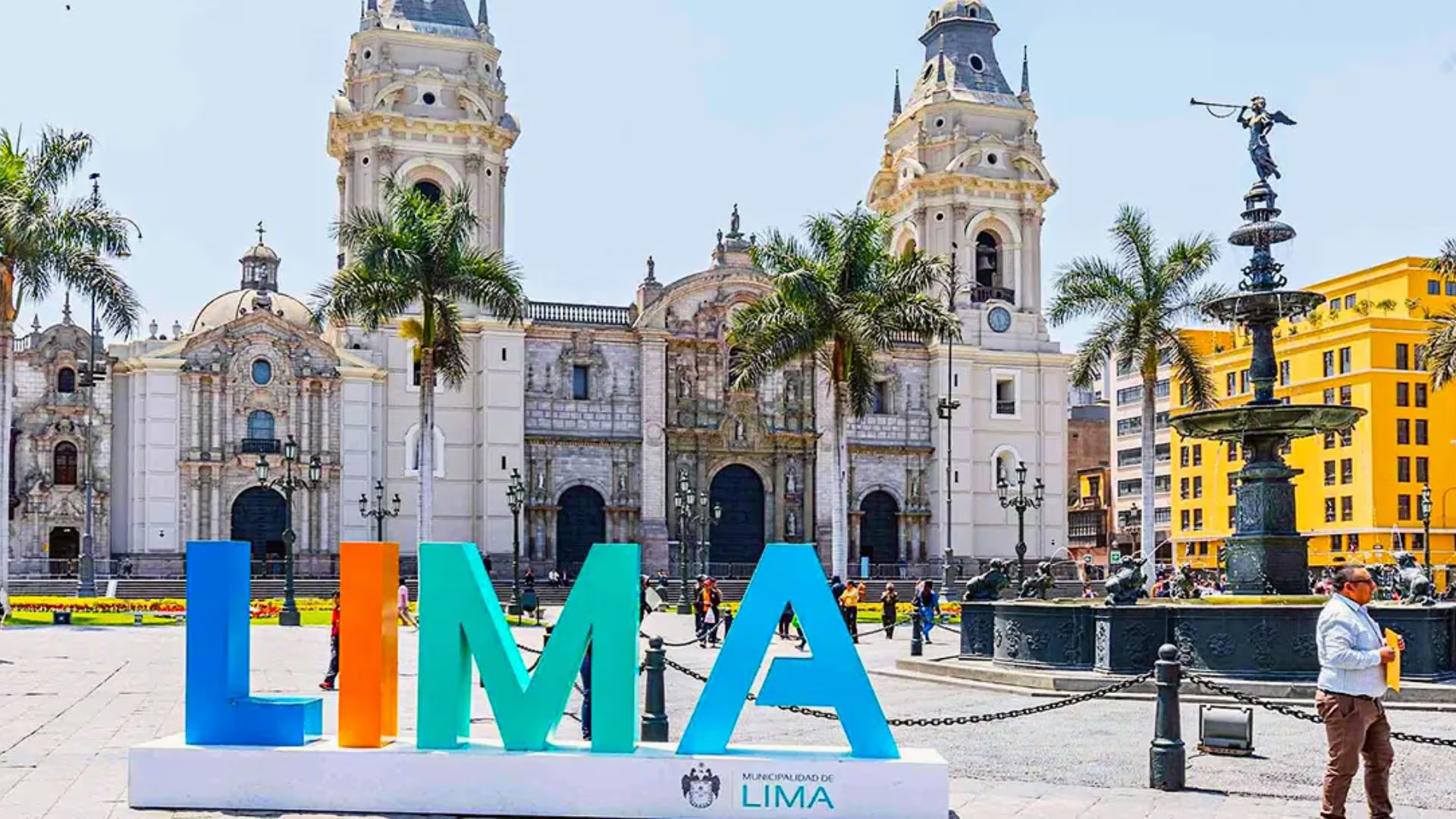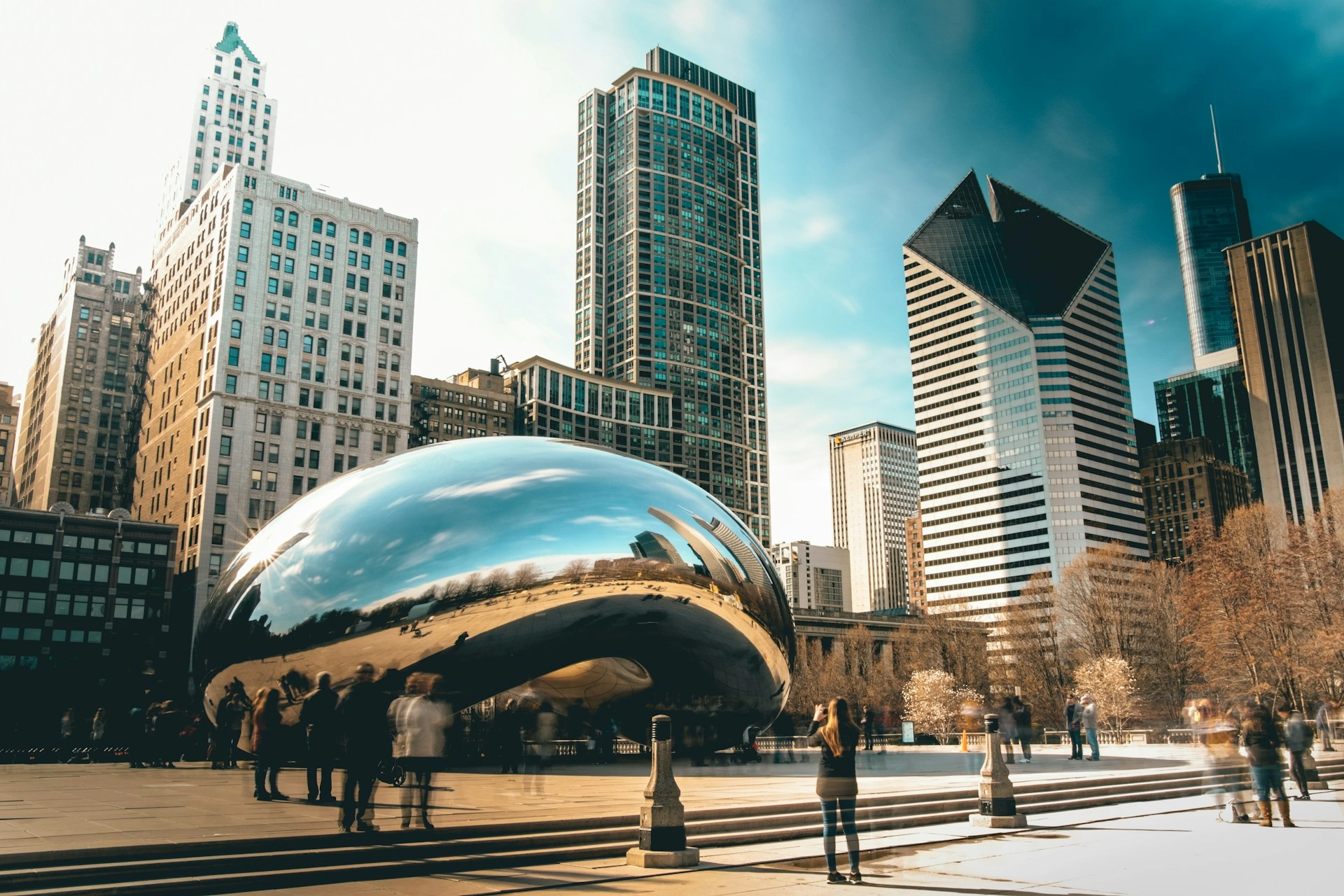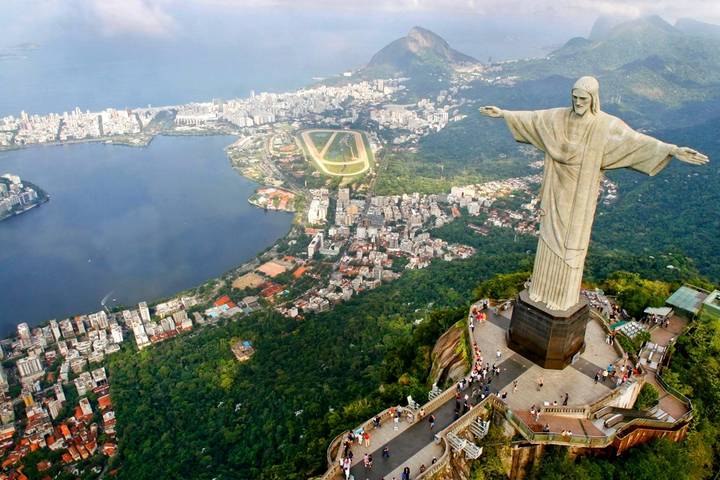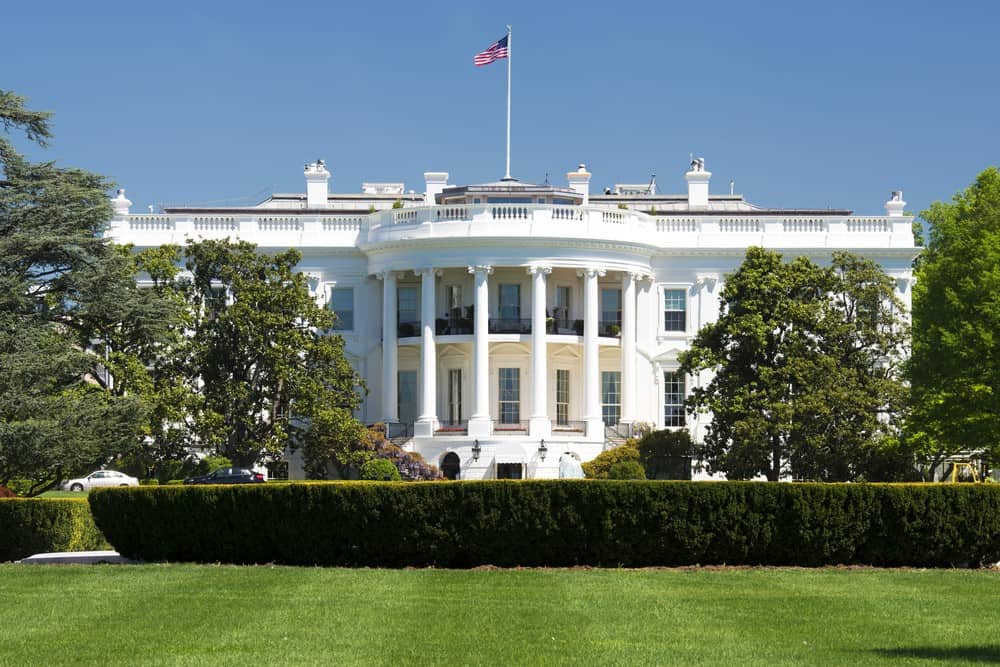Veering in every corner from coastal desert to glaciated mountains, the country is a land of culture and of contrast. Whacked-out festivals like Carnaval are offset by wonderfully hokey traditions found all over, such as night-shrouded vigils with traditional musicians accompanying idolatrous statues at streetcorner pins for a stomach-wrenching 168 hours straight. A place where colonial architecture is interspersed with high-rise buildings, the sound of crashing waves contrasts with the honking horns of a big city, and thousands of years of history mingles seamlessly with modern life. Lima is not merely the capital of Peru; it’s its beating heart, a vibrantly diverse “it” city with museums and fine dining in glistening seaside neighborhoods — as well as some of the continent’s humblest pueblos jovenes.
A JOURNEY THROUGH TIME: LIMA’S HISTORY
Lima’s history even predates that of the Spanish. Indigenous peoples such as the Lama, and Iachimas had lived in this area for thousands of years before it became a part of the Inca Empire. Those ancient civilizations can still be seen in the city today, where adobe pyramids and temples sit silently among bustling streets.
The city was founded on 18 January 1535, and is the capital of the Viceroyalty of Peru. It soon became the most significant Spanish city in South America. Lima served as the southernmost capital of the Viceroyalty of Peru during the Spanish conquest.
Independence arrived in the early 19th century, and life has evolved into a bustling metropolis, itself now rich with layers of history. Earthquakes, changes in the economy and waves of migration have defined the city, turning it into a complex and fascinating place as we know it today.
PEOPLE AND LANGUAGE
Home to more than 10 million residents, the capital city of Lima is not just the largest in Peru—it’s one of the largest on the continent. It is a bustling, polycultural city — people from across the country and around the world. Migrants from the Andes, the Amazon, coastal regions and as far afield as Asia and Europe have taken their traditions and flavors to the capital, where they form a rich cultural tapestry.
The official and most widely spoken language in Lima is Spanish. Yet some residents speak indigenous languages, including Quechua and Aymara, particularly among those who migrated from the highlands. Schools teach English and it’s spoken in touristy areas, although not fluently by everyone, so a few key Spanish phrases can help you get around.
CURRENCY AND ELECTRICITY
What is the Currency of Peru? SOL. There are a lot of ATMs in Lima and credit / debit cards are accepted in most restaurants and hotels and stores. Some street vendors and small businesses may like cash, especially at local markets.
The electrical voltage used in the country is 220 volts (at an hz of 60) and the plugs for devices are of type A, two flat prongs or C- two round prongs. North American visitors may require a voltage converter or adapter for their devices.
LIMA’S CLIMATE: MILD BUT MOODY
Desiteually cooler Humboldt Current that runs up the coast of the Pacific. The city has two significant seasons that include the humid winter season of May to October and a warmer drier summer season from December to March.
During winter months, temperatures seldom drop below 13ºC (55°F) with a constant drizzle (locally called la garúa even when it rains) and very rare beautiful sunny days leave the city with a moody gray hue to it. During the summer, temperatures can reach about 29°C (84°F) with clearer skies and some humidity. Rain almost never falls in Lima, though the Andes mountains that surround it do.
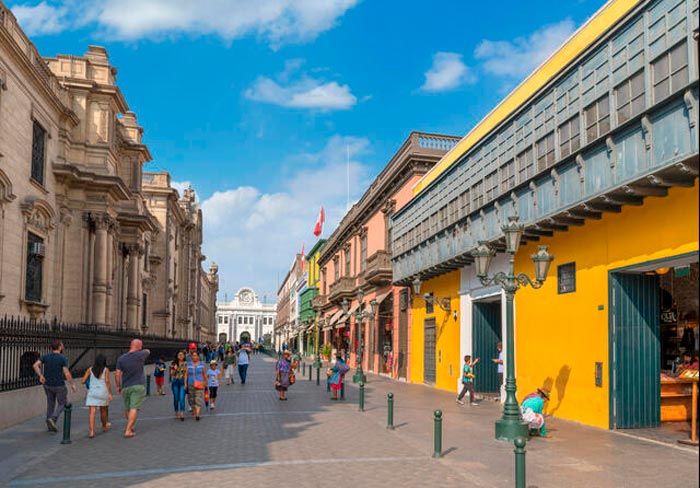
A FEAST FOR THE SENSES: LIMA’S FOOD SCENE
Lima is the world’s gastronomic capital, and no less. The metropolis’ cuisine is very much shaped by its cultural variety, as well as the availability of fresh food from the coast, mountains and jungle. Food here isn’t just a meal, but a is a point of pride, an invitation to gather and an expression.
One of its staples is something we’ve let soak up for a while now in the likes of San Francisco and New York: ceviche, fresh fish marinated in lime juice and combined with onions, chili and coriander usually served with sweet potato and corn. It is fresh, tangy and terribly addictive.
Other must-tries include:
Lomo saltado – beef stir-fry, with onions, tomatoes and french fries, is served with rice.
Aji de gallina – shredded chicken in a creamy, spicy yellow chili sauce.
Anticuchos – skewered slices of grilled beef heart sold from street vendors.
Causa limeña – layers of mashed yellow potatoes with chicken, avocado or seafood.
Lima also has a thriving dining scene with internationally renowned establishments such as Central, Maido and Astrid y Gastón. But do not discount the humble market stands and neighborhood cevicherías — some of the best food is available where local people eat.
GETTING AROUND: TRANSPORTATION IN LIMA
Even then, Lima is a large city and hailing a cab can be difficult at times, especially during rush hour. Traffic is horrible, so it’s important to plan in advance.
The Metropolitano, Lima’s primary rapid bus transit system with its own lanes and air-conditioned buses connecting the main parts of the city. It’s a quick and cheap choice — but it can also be packed at peak times.
Taxis are abundant, but they aren’t always metered. For safety and convenience, it is better to use a reliable app such as Uber or Beat, or Cabify.
For a local and slightly more adventurous experience you might take the “combis” — privately operated minivans or buses that go just about anywhere. But in other ways, they can make life confusing for first-time visitors and are far from the safest transportation option — particularly after dark.
Walking is great for some areas like Miraflores, Barranco and San Isidro (sidewalks are clean and well-lit, with everything relatively close).
SAFETY IN THE CITY
Lima has, as with almost all big cities in Latin America, safe and unsafe areas. The touristy areas, such as Miraflores and San Isidro are generally safe and crime is not a problem in these places. They have good police coverage, clean streets and lots of visitors.
But it does happen: if petty crime, such as pickpocketing or bag snatching, is going to befall you then it’s mostly likely happen in a busy place or on public transport. It’s smart to lock up your belongings, not display valuable electronics or jewelry and stay aware of your environment.
At night, stay in well-lighted or populated places or take a trustworthy taxi or rideshare vehicle instead of walking long distances.
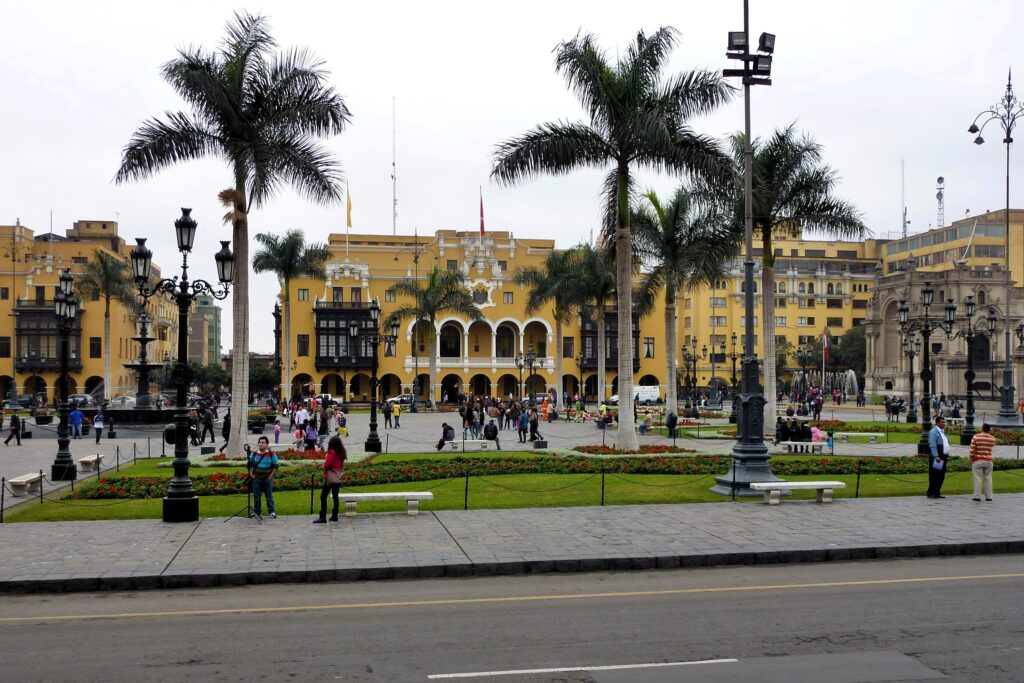
WHAT TO SEE AND DO IN LIMA
There’s a bit if everything in Lima — history, art, nature, nightlife. Here are some highlights:
Magic Water Circuit
Enormous water and light show in Parque de la Reserva – perfect for families and night entertainment. It is one of Lima’s most joyful and striking attractions.
Plaza Mayor (Main Square)
The original downtown of Lima, enclosed by the Cathedral to Palace of Government and Archbishop’s Palace. The colonial architecture and the palm-tree-lined plaza are beautiful, especially when illuminated at night.
Miraflores and the Costa Verde
Frequented by tourists, this affluent neighborhood offers parks, restaurants and shopping with stunning views of the Pacific Ocean. The Malecón (cliffside boardwalk) is a great place for a walk, bike ride or paragliding.
Barranco
The city’s bohemian district has plenty of charm. Boasting vibrant murals, colonial mansions, art galleries and a buzzing nightlife scene, it is popular among creatives and tourists alike.
Larco Museum
A collection of pre-Columbian artifacts — some 25,000 — is one highlight at this museum in an 18th-century manor, as are the popular erotic pottery. It provides an excellent depth on Peru’s ancient culture.
Huaca Pucllana
An adobe brick pyramid situated in the middle of Miraflores. You can take a guided tour or dine at the adjacent restaurant overlooking the lit ruins.
Parque Kennedy and Cat Park
Miraflores: At the center of Miraflores, this lively park is home to dozens of friendly cats (cared for by a local nonprofit) and is also popular with local artists, food vendors, and live performers.
OTHER ASPECTS OF LIFE IN LIMA
Culture Scene: Lima is teeming with festivals, music, dance and art. The city’s creative scene is put on display at events such as Perú Moda, Mistura food festival and the Lima Film Festival.
Shopping: Handmade crafts, Peruvian textiles, alpaca wool and silver jewelry are among the items you can find at artisan markets in Miraflores or upscale malls such as Larcomar.
Hospitality: The most remarkable thing about Lima is its people. Friendly, generous and proud of their culture, Limeños (residents) are generally quite welcoming.
Lima isn’t a case of love at first sight for everyone — it’s bustling, messy and often draped with gray skies. But spend some time here, and it begins to show its true face: big-hearted and full flavored, deeply human. Whether you’re sipping a pisco sour in a seaside bar, clambering through centuries-old ruins or sharing a political joke with some wizened local over ceviche at an open-air market, Lima will get under your skin — and stay there.
Unlike the layers of Vogt’s llama, some of which are hidden beneath others, the layers of Lima may be more or less visible at any given time, depending on where you look and when, but figuring them out is what makes Lima more than a stopover, but rather something to lay over.
